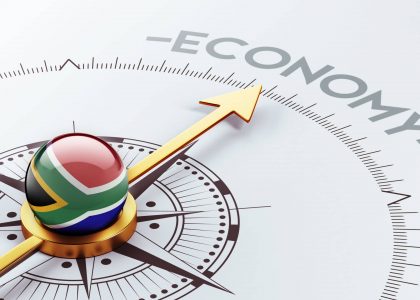The story of Eskom being a direct cancerous disease slowly deteriorating the health of South Africa’s economy and its prospects. Eskom has been implementing load shedding since 2008, which is a controlled power outage, due to a lack of generating capacity as demand outpaces supply. These power cuts have had adverse effects on various sectors of the economy.
Eskom has been unable to keep the lights on due to years of mismanagement and systematic corruption coupled with massive cost overruns that have impacted Eskom’s ability to provide reliable electricity to South Africans. The degradation of assets led to the falling availability of generation capacity, and this consistently increase load-shedding. Further to that, Eskom has mounting debt staggering at R420 billion. The Minister of Finance has announced a R254 billion debt relief arrangement over the next three years, with R168 billion in capital and R86 billion in interest. The announced Eskom Debt Relief Bill depletes the money that could have been used in other government-related development projects or job creation initiatives. Load shedding continues to threaten all economic sectors.
Business disruptions: Load shedding disrupts business operations as companies are unable to operate at full capacity or may need to halt production altogether during power outages. This leads to decreased productivity, delayed deliveries, and potential financial losses. To mitigate the impact of power outages, some businesses have resorted to installing backup generators or investing in renewable energy solutions. It is estimated that the daily cost of load shedding sits in the billions. However, these alternatives come with additional costs, which strain the finances of businesses, especially small and medium-sized enterprises. Some of these costs are being passed on to consumers in the form of increased prices for goods and/or services.
Small business owners: In South Africa, small businesses rely heavily on a consistent and reliable energy supply. They can no longer afford not to invest in contingency plans that can help them stay afloat in the energy crisis. Most of these small enterprises are barely surviving with many closing their doors as there is little to no support in securing funding of acquiring alternative energy sources to keep their doors open. This does not help in addressing the existing high inequality environment faced by South Africa- leading to widened inequality which can have unforeseen social unrest.
Mining and manufacturing sectors: South Africa’s mining and manufacturing sectors heavily rely on a stable and consistent power supply. Load shedding has had a significant impact on the mining and manufacturing sectors, which are both significant contributors to South Africa’s GDP. Mining accounts for 9% of GDP, while manufacturing contributes 14%. With frequent power cuts, operations managers in the manufacturing sector have a difficult time trying to satisfy demand and maintain efficiency. This has seen the South African Reserve Bank (SARB) estimate that load shedding would shave off two percentage points from economic growth this year, and it expects the domestic economy to only grow by 0.2% this year from 2% in 2022. The power shortages have impacted production levels and export capabilities, affecting economic growth and employment in these sectors.
Foreign Direct Investment (FDI) and investor confidence: The power crisis raises concerns among domestic and foreign investors about the reliability and sustainability of South Africa’s energy infrastructure. Foreign businesses are hesitant to invest in South Africa in the face of a poorly run utility like Eskom. Uncertainty regarding power supply discourages investment and hampers economic development. Load shedding has led to job losses and a decline in investor confidence, making it more challenging for South African businesses to secure funding and grow. While there is no direct evidence of the impact of load shedding on foreign direct investment, it is reasonable to assume that the negative impact of load shedding on the economy could discourage foreign investors from investing in South Africa.
Economic growth and job creation: The power crisis has contributed to slower economic growth in South Africa. Insufficient electricity supply constraints economic activities and reduces the potential for job creation, exacerbating the already high unemployment rate in the country. The SARB has estimated that load shedding would cost growth of 2% of GDP in 2023, for an expected 250 days of load shedding. The SARB also sees South Africa’s economy grow by about 0.2% due to load shedding, and without power outages, South Africa’s GDP growth could have been at 2.3% this year, with agriculture, forestry, and fishing the most impacted.


Inflation: Load shedding adds materially to inflation, and it will likely continue to do so, according to the SARB. Based on the SARB’s latest Monetary Policy Review, Load-shedding that is implemented during business operating hours affects output and productivity. The SARB estimates that in 2022, approximately 14% of business hours were lost in the industrial sector, while losses in the commercial and agricultural sectors varied between 11% and 12%. With load-shedding expected to increase from 157 days in 2022 to 250 days in 2023, the loss in business hours is expected to rise. Businesses have resorted to costly alternative sources of energy such as solar or backup power generators to mitigate the production downtime from load-shedding. The latter, in particular, presents significant variable (fuel) costs, and these additional costs are likely to be passed on to consumers, adding to inflationary pressures.
Based on the above-mentioned assumptions and with producers passing on 90% of the additional energy costs due to load-shedding to final consumer prices, load-shedding raised the CPI by 0.6% in 2022 and is expected to raise it by a further 1.1% in 2023. This further implies an inflation rate impact of 0.5 percentage points (i.e., 1.1% – 0.6%) in 2023 from load-shedding as per the SARB’s Monetary Policy Review.
In conclusion, Load shedding can interact with other factors such as inflation and unemployment to further impact economic growth. Load shedding can cause businesses to halt operations or operate at reduced capacity, leading to a decline in productivity, which can increase unemployment rates. The increase in operational costs due to load shedding can also lead to inflation, as businesses may pass on the increased costs to consumers. Load shedding can also impact the agriculture, mining, and manufacturing sectors, which are significant contributors to South Africa’s GDP, leading to a decline in economic growth. The impact of load shedding on the economy can also lead to a decline in investor confidence, which can further discourage foreign investment. Therefore, it is important to address the issue of load shedding to mitigate its impact on the economy and other factors such as inflation and unemployment.



the is too much political influence in this Eskom power failure
I think the people of this nation has to make the right decisions in terms of who to put in power
#2024elections